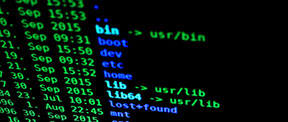**Exploring the depths of Linux commands: A journey through ‘findmnt’**
In the vast landscape of Linux commands, there lies a lesser-known yet highly useful tool named ‘findmnt’. This command offers a powerful way to delve into the intricacies of your file system, providing insights into mounted file systems and their properties.
**What is ‘findmnt’?**
Findmnt is a command-line utility that provides detailed information about mounted file systems in a Linux system. It allows you to query, filter, and display information about mounts, including mount points, device names, file system types, and mount options.
**Usage and examples**
To use findmnt, simply run the command followed by the desired options. Here are some common use cases:
**1. Display a list of all mounted file systems:**
“`bash
findmnt
“`
This command will list all mounted file systems, including local partitions, network shares, and other mounted devices.
**2. Find the mount point of a specific file or directory:**
“`bash
findmnt -n /path/to/file
“`
This command will find and display the mount point of the specified file or directory.
**3. Filter mounted file systems by file system type:**
“`bash
findmnt -t ext4
“`
This command will list only those mounted file systems that use the ext4 file system type.
**4. Display mount options for a specific mount point:**
“`bash
findmnt -o /dev/sda1
“`
This command will display the mount options used for the mount point at /dev/sda1.
**5. Print the UUID of a mounted file system:**
“`bash
findmnt -U /path/to/mount/point
“`
This command will print the UUID (Universally Unique Identifier) of the mounted file system at the specified mount point.
**Beyond the basics**
In addition to these basic examples, findmnt offers a plethora of advanced options for fine-grained control over the information it displays. These options include:
* **-E:** Exclude file systems with the specified mount options.
* **-f:** Filter mounts by a POSIX expression.
* **-M:** Display information about file system labels.
* **-s:** Show only selected fields.
* **-w:** Display wide output for improved readability.
**Conclusion**
Findmnt is an invaluable tool for managing and troubleshooting file systems in Linux. Its versatility and powerful filtering capabilities make it an essential addition to the toolbox of any system administrator or power user. By mastering this command, you can gain a deeper understanding of your file system’s structure and operation, empowering you to optimize performance and resolve issues effectively.
